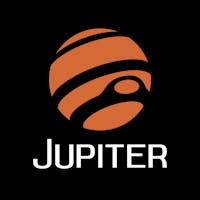Communication from teachers to both students and parents has always been important in K-12 education. But in the tech-dependent era of distance and hybrid learning, clear and consistent communication—about grades, assessments, learning targets and a host of other school-related matters—may now be more important than ever.
Justin Hall, who teaches math at Rancho Cucamonga Middle School, understands this need well. A 16-year veteran middle school teacher, Hall is a big proponent of increasing access to information for all education stakeholders. And he’s happy to share his preferred tool for making classroom communication more efficient and effective.
EdSurge: Has the pandemic changed the nature of parent-teacher communication?
Hall: Parent-teacher communication has always been important, and that didn’t change during the pandemic. But since our site has been using Jupiter and their communication tools for years, our communication during distance learning was seamless. The teachers, as well as the parents, are all very familiar with the Jupiter communication tools. Both groups use these tools effectively.
During the distance learning months, we did parent conferences over Zoom. We found that worked really well for all parties. Since parents have real-time access through Jupiter to see how students are doing, formal parent conferences have become less necessary in many ways.
Why does seamless communication—between parents, teachers and students—matter?
All of us need to use our time as wisely as possible. If we communicate efficiently and regularly, we can meet that goal. If we maximize the communication tools we have, we can minimize miscommunication. Both teachers and parents appreciate how seamless communication can keep everyone more informed and on the same page.
However, this is not just about teacher and parent communication. This is about students as well. If students have questions or need support after hours, we can now take care of that. Each week, I have at least five students contact me after class to ask about our work that week. This type of communication helps students feel more connected and supported.
It helps to have personalized and relevant information shared between all parties. It’s about meeting everyone’s needs. Many things are time sensitive, and these tools make us more efficient.
If a parent is signed in to Jupiter, they have access to the grades, all assignments and the homework. Through Jupiter, parents can communicate to all of their student’s teachers with one message. This is much faster than finding each teacher’s email.
I have seen an increase in the amount of communication between teachers and their students, as well as the students’ parents. I have also seen a huge shift away from parents leaving voicemails. The general practice at our school is that we communicate through Jupiter. Parents are welcome to call me, but they don’t need to very often.
With all of the messaging capabilities, as well as the real-time information that parents have access to, they are feeling more informed and up-to-date. The increased communication and sharing of information has contributed to more positive relationships between teachers and their students and parents.
In what ways does the platform support feedback for students?
Each assignment gives you feedback options. You can put comments on entire assignments. Depending on the assignment, you can also make comments on each question. Students can log in and see very specific and timely feedback. When we use a rubric, we don’t just assign a score or a grade. Rather, we reference the rubric to show students exactly how they met or did not meet a standard. This helps us communicate something important to students beyond a simple score.
This type of feedback informs students in a way that is much more relevant to mastery, formative assessments and growth. We don’t have to take valuable instructional time to give or explain feedback. Ultimately, it is more personalized, helps things run smoothly and allows for ongoing reflection.
There are also built-in modes. For example, we have the ability to do a critique. Teachers can make a post, and students can comment on the post. It can be set so that students have to give a critique or respond. There are student-student modes that allow for peer feedback. And teachers can turn modes on and off as needed.
How does Jupiter compare to other LMS or SIS platforms you’ve used?
Jupiter, in my estimation, is superior in many ways. The LMS and gradebook are the best I’ve used. The platform provides teachers a great degree of control and flexibility. There are very few things I could think of changing or improving. The communication features have been a great addition. It has great teacher tools. The assignment builder is very helpful. And things like their seating chart builder are also beneficial for teachers.
Jupiter has thought about teachers a lot in their design. However, it is also user-friendly for students and parents. I don’t know another tool that is as flexible as Jupiter.



